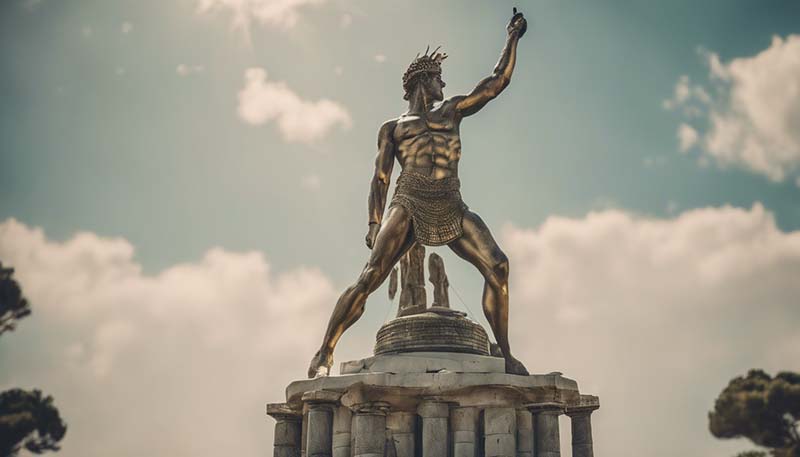The Colossus of Rhodes, one of the Seven Wonders of the Ancient World, stands as a testament to the ingenuity and artistic prowess of the ancient Greeks. This colossal statue was a symbol of the island city's power and wealth, and its legend has captivated historians and archaeologists for centuries. This article delves into the history, construction, destruction, and the ongoing efforts to recreate this ancient wonder.
**Historical Context**
The Colossus of Rhodes was erected in the 3rd century BCE on the island of Rhodes, a significant maritime power in the eastern Mediterranean. The statue was commissioned by the Rhodians to celebrate their victory over the forces of Demetrius I of Macedon, who had unsuccessfully attempted to capture the city in 305 BCE.
Advertisement
**Design and Construction**
The statue was designed by the renowned sculptor Chares of Lindos, who was a student of Lysippus, the official sculptor of Alexander the Great. The Colossus was a bronze statue depicting the sun god Helios, who was also considered the patron deity of Rhodes.
The construction of the Colossus was a massive undertaking, requiring a significant amount of bronze and skilled craftsmanship. It is believed that the statue stood approximately 33 meters (110 feet) tall and was constructed using the lost-wax casting technique. This method involved creating a clay model, covering it with wax, and then encasing the wax in a ceramic mold. The molten bronze was then poured into the mold, and once cooled, the ceramic was removed, leaving behind the bronze statue.
**The Statue's Significance**
The Colossus of Rhodes was not only a symbol of victory but also a technological marvel of its time. Its construction showcased the advanced engineering and artistic skills of the ancient Greeks. The statue also served a practical purpose, as it was strategically positioned at the entrance to the city's harbor, Mandraki, to guide ships into the port.
**The Colossus' Fall**
Despite its grandeur, the Colossus of Rhodes stood for less than six decades. In 226 BCE, a powerful earthquake struck the region, causing the statue to collapse and shatter into pieces. The Rhodians, however, were hesitant to rebuild the statue, as they feared that they would incur the wrath of the gods by attempting to recreate such a monumental work.
**Rediscovery and Reconstruction Efforts**
The legend of the Colossus of Rhodes has endured through the ages, and numerous archaeological expeditions have been conducted in search of its remains. While the exact location and extent of the remains are still a subject of debate, several artifacts and inscriptions have been discovered, providing valuable insights into the statue's construction and the culture of ancient Rhodes.

In recent years, there have been proposals to reconstruct the Colossus as a modern monument and tourist attraction. These efforts have sparked both enthusiasm and controversy, as some argue that the recreation would pay homage to the ancient world's ingenuity, while others believe that it would detract from the original statue's historical significance.
**Conclusion**
The Colossus of Rhodes remains an enduring symbol of the ancient world's architectural and artistic achievements. Its history, from its construction to its untimely destruction, serves as a reminder of the fleeting nature of human accomplishments. As archaeologists and historians continue to uncover new information about this ancient wonder, the Colossus of Rhodes will continue to captivate the imaginations of people around the world.
Comments